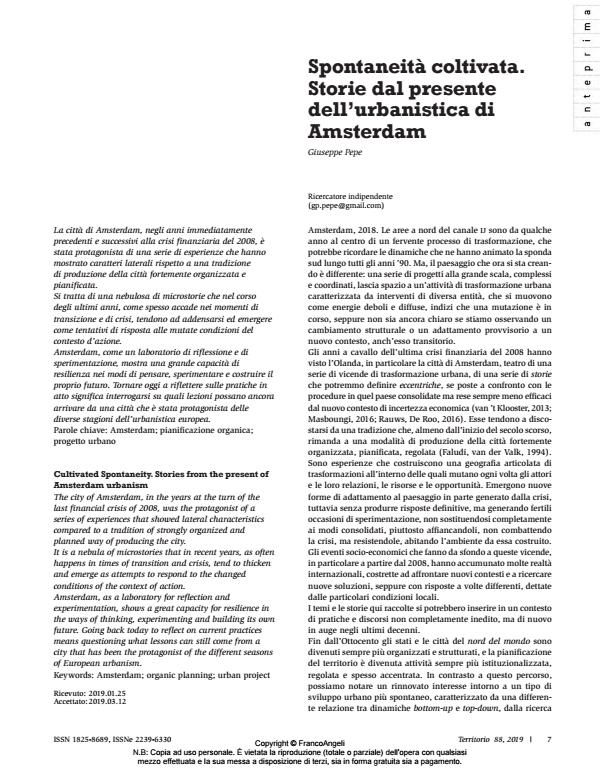Cultivated Spontaneity. Stories from the present of Amsterdam urbanism
Journal title TERRITORIO
Author/s Giuseppe Pepe
Publishing Year 2019 Issue 2019/88
Language Italian Pages 18 P. 7-24 File size 537 KB
DOI 10.3280/TR2019-088001
DOI is like a bar code for intellectual property: to have more infomation
click here
Below, you can see the article first page
If you want to buy this article in PDF format, you can do it, following the instructions to buy download credits

FrancoAngeli is member of Publishers International Linking Association, Inc (PILA), a not-for-profit association which run the CrossRef service enabling links to and from online scholarly content.
The city of Amsterdam, in the years at the turn of the last financial crisis of 2008, was the protagonist of a series of experiences that showed lateral characteristics compared to a tradition of strongly organized and planned way of producing the city. It is a nebula of microstories that in recent years, as often happens in times of transition and crisis, tend to thicken and emerge as attempts to respond to the changed conditions of the context of action. Amsterdam, as a laboratory for reflection and experimentation, shows a great capacity for resilience in the ways of thinking, experimenting and building its own future. Going back today to reflect on current practices means questioning what lessons can still come from a city that has been the protagonist of the different seasons of European urbanism.
Keywords: Amsterdam; organic planning; urban project
Giuseppe Pepe, Spontaneità coltivata. Storie dal presente dell’urbanistica di Amsterdam in "TERRITORIO" 88/2019, pp 7-24, DOI: 10.3280/TR2019-088001